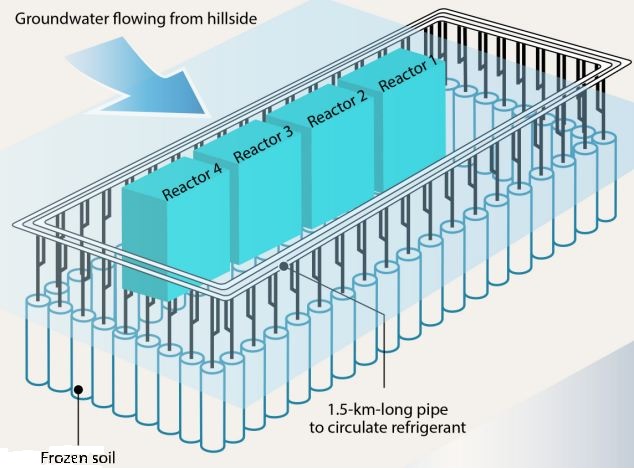I post a lot links about the repercussions of the disaster there in March of 2011. One of the reasons that I post so many of these links is that I want people to understand just how profound the effects are of such a major nuclear accident on a society. I have been following the various problems and efforts to control them since the accident and I decided that today I would return to Fukushima to discuss how they are trying to deal with the leakage of contaminated water into the Pacific Ocean.
TEPCO has just begun dumping ground water into the Pacific Ocean that has been routed around the melted reactors cores at Fukushima. The water is not completely free from radioactive contamination but TEPCO claims that it does not represent a threat to humans or life in the ocean. Critics of the way that the repercussion of the Fukushima disaster are being handled are debating that claim.
The Nuclear Regulatory Agency (NRA) of Japan was created after the Fukushima disaster to act as an government oversight agency for nuclear affairs. The NRA has just authorized the "construction of a network of pipes, pumps and compressors designed to freeze the ground and create a mile-long ice wall to block the path of water flowing between surrounding mountains and the Pacific Ocean." This technique has been used to dig tunnels near water but has never been attempted on this scale.
The ice wall will be constructed around the four reactors at Fukushima that sustained damage. The cores of reactors for Units 1,2 and 3 have melted down into the Earth. The building housing the Unit 4 reactor and spent fuel pool was heavily damaged when Unit 3 exploded. The ice wall will be almost a mile long and will penetrate one hundred feet into the ground. Holes will be drilled and pipes will be inserted into the holes. Coolant as cold as minus forty degrees Celcius or forty degrees below zero Fahrenheit will be pumped into the holes and will freeze the soil around the hole. The intention is to form a water tight rectangle around the four damaged reactors.
If the plan works, the water that is flowing underground from the mountains behind the Fukushima power plant will be diverted around the ice wall and flow into the ocean without being contaminated. In addition, heavily contaminated water which is inside the rectangle will be trapped and unable to flow into the ocean. Construction of the ice wall is expected to be completed by March of 2015. A new ground water drainage system is being created around the damaged reactors as a backup for the ice wall. Critics are not convinced that the ice wall will be as effective as TEPCO claims. Considering the incompetence and dishonesty displayed by TEPCO in the past, the critics may well be right.
